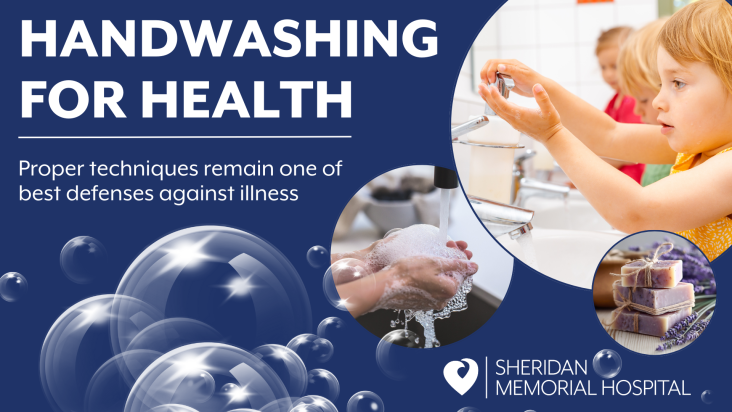By Emily Denney, DO – SMH Primary Care
Handwashing key to reducing illness
School has begun and for many families that means the threat of illness has returned. The simplest way to limit your exposure to all those back-to-school germs is easy, yet few of us do this everyday act properly. So what’s the trick? Wash your hands.
Washing your hands means more than dipping your hands under the faucet for a few seconds and shaking them dry, though. Effective handwashing includes several key steps, including letting the soap itself work its magic.
- Let’s start with key steps of handwashing:
- Wet your hands with clean, running water.
- Lather your hands by rubbing them together with the soap. Lather up the backs of your hands, between your fingers and under your nails.
- Scrub your hands for at least 20 seconds. If you need an easy timer, sing “Happy Birthday” to yourself twice or whistle the ABCs. If you need something more familiar for adults, try the chorus for “Jolene.”
- Dry your hands using a clean towel or an air dryer.
Skipping any of these steps can reduce the effectiveness of handwashing, as the time the soap is on your hands and the friction created by scrubbing is key. While antibacterial soap can kill the germs on your skin, basic soap and water is just as effective when used properly and not as hard on your skin.
So how does soap work? It’s cooler than you might imagine. Regular soap is designed to decrease water’s surface tension and lift dirt and oils off surfaces so it can be more easily washed away, making it very effective in getting rid of bacteria and other virus-causing germs. Regular soap also won’t kill healthy bacteria on the skin’s surface or dry out the skin. Just be sure you take those 20 seconds to thoroughly scrub and lather the soap.
Knowing when to wash your hands can also help. Be sure to utilize soap and water after sneezing or blowing your nose, after using the restroom, before and after eating as well as periodically throughout the day if you’re touching a lot of common surfaces such as doorknobs, desks or handrails.
Other steps you can take to reduce your risk of illness this fall include:
- Ensure you’re up-to-date on routine vaccinations like flu shots, etc.
- Practice positive self-care by eating well, getting enough sleep, managing stress when possible and exercising. All of these practices can boost your overall health and immunes system.
- Stay home if you’re sick. If those who are ill stay home, it reduces the risk of exposure for everyone.
- Cover your mouth and/or nose when you sneeze or cough, but use your elbow so you aren’t getting those germs on your hands, which touch many other surfaces.
The return of cooler weather and additional interactions with people can mean more germs in the air, but proactive steps can help reduce your risk of illness.

